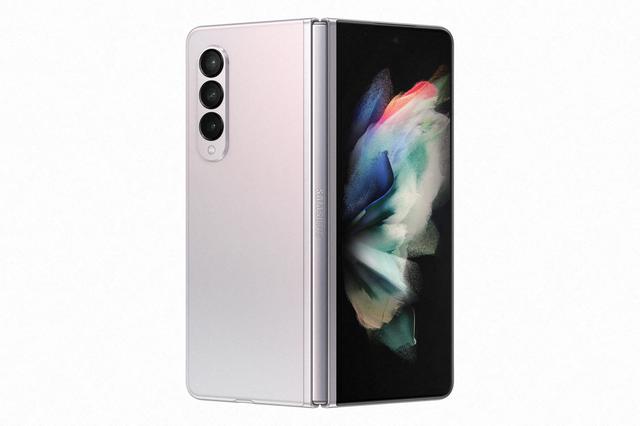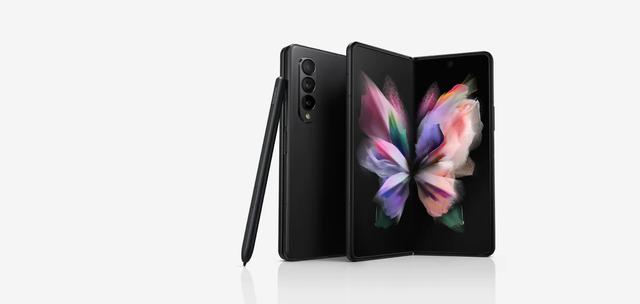
Tech review: Samsung’s folding phones keep getting better
For a while it seemed like phones were changing designs with every new model, but for the most part, phone makers have now settled on a design. Most phones look like a big screen with no buttons on the front, and from 10 feet, it’s hard to differentiate between them.
One of the benefits of settling on a design is the opportunity to have several years to improve “under the hood” features.
That’s one reason I’m impressed that Samsung has committed to the folding phone.
Last week, Samsung introduced the newest versions of the Galaxy Flip 3 5G and the Galaxy Fold 3 5G.
Outwardly, they look similar to last year’s models, but inside they are very much improved.
I’ve had the phones for a week now, and here’s a first look at each one, plus the newest Galaxy Buds 2.
The Flip 3 and Fold 3 (as you might guess) are the third generation of Samsung’s folding phones.
The first generation had issues with debris getting into the screen fold, and the hinge mechanism wasn’t fully enclosed — you could see the inner workings under the screen.
This didn’t make for a very robust folding experience.
But Samsung didn’t walk away from folding phones. Instead, it doubled down, improved the design and now the third-generation folding phones are IPX8 water-resistant.
They can survive a 30-minute dunk in five feet of water, although Samsung still warns users about dust getting inside the hinge.
Most people want to know if the fold is visible on the screen.
The answer is yes, but depending on the view angle and what is on the screen, it does disappear.
You can feel the fold if you swipe your finger on the screen, but if the screen is on, the fold really does visually disappear.
The folding screens are very thin glass covered with a thin plastic screen protector (and please don’t try to remove it).
The Flip 3 is the closest to a regular phone, except that it folds in half like a man’s wallet.
In my mind, the key to making a successful folding phone is to find uses for it when it is folded.
The Flip 3 surprised me by being able to answer a call with the phone folded up.
There is an always-on small screen on the back of the phone next to the cameras. When the phone is closed, you can choose what appears on that screen.
Most of the time that screen will show the time and date, but you can also choose to have it show incoming texts, music playback controls or even have it act as a preview screen for the rear cameras.
The Flip 3 5G’s 3,300 milliamp-hour battery powers the phone’s Qualcomm Snapdragon 888 processor running Android 11 with 8 gigabytes of RAM and 128 or 265gb of internal storage.
The folding screen is a 6.7-inch AMOLED Infinity Flex display with a resolution of 2,640 by 1,080 pixels with a 120-hertz refresh rate for very smooth scrolling.
The cover screen is a 1.9-inch AMOLED display with a resolution of 260 by 512 pixels.
The front camera has a 10-megapixel sensor with an 80-degree field of view and an aperture of f/2.4.
The rear dual cameras each have 12MP sensors. The wide-angle camera has a 78-degree field of view with an aperture of f/1.8. The ultra-wide camera has a 123-degree field of view with an aperture of f/2.2.
The wide-angle camera has optical image stabilization and tracking autofocus.
The Flip 3 can capture 4K ultra-high-definition video at 30 and 60 frames per second and super slow motion at up to 960 fps.
The cameras have video digital image stabilization.
The Flip 3 has fast charging for both wired (USB-C) and wireless charging, and it can also share its charge with other devices with wireless charging (like other phones or Galaxy Buds 2).
Networking includes 5G and 4G LTE, Wi-Fi 6 and Bluetooth 5.1.
Biometric unlocking includes a side-button fingerprint sensor and face recognition.
I’m still trying to figure out whether I like the Fold 3.
It has a full-sized front screen you can use, but the star of the show is the big screen inside.
I love the concept of a phone that folds out to reveal a huge screen, but I’m not sure how many times per day I’d use the front screen because it is convenient versus opening the big screen.

When you choose to only use the front screen, the phone is twice as thick as a normal phone, which is awkward to hold.
When it’s closed, the Fold 3 has a 6.2-inch AMOLED front screen with a resolution of 2,268 by 832 pixels and a 120Hz refresh rate.
The front screen lets you do everything, unlike the Flip 3′s front screen, which is limited in what it can do. The front screen also has a 10MP selfie camera.
But the Fold 3′s magic begins when you open it up to reveal a glorious 7.6-inch AMOLED Infinity Flex display with a resolution of 2,208 by 1,768 pixels.
The big screen is HDR10+ certified with a 120Hz refresh rate and a 4MP selfie camera that’s behind the screen.
Around back there are three main cameras — a 12MP wide-angle, a 12MP ultra-wide and a 12MP telephoto.
Inside, the Fold 3 is running Android 11 on a Qualcomm Snapdragon 855 with 12GB of RAM and 128 or 256 GB of internal storage.
Networking includes 5G, 4G LTE, Wi-Fi 6e and Bluetooth 5.2.
The Galaxy Flip 3 5G is available in black, white, pink, green, lavender, gray and cream.
The 128 GB and 256 GB models are both available starting Aug. 27 for $999.
Why do they cost the same?
Samsung is offering $150 in Samsung accessory credit if you preorder at Samsung.com, and $50 of that credit can be used to lower the price of the 256 GB model to $999.
The Galaxy Fold 3 5G is available in black, green or silver starting at $1,799 for 256 GB. If you preorder, you can apply $100 of the credit to bring the 512 GB model down to $1,799 as well.
There are also pretty good trade-in offers for both models.
The phones are also available from all the major wireless carriers.
Samsung has announced that there will not be a new Galaxy Note phone this year. The Note is the phone known for its stylus.
Samsung has added stylus compatibility to the Fold 3. Sorry, Flip 3 buyers: No stylus support for you.
There are two stylus models available, the S Pen Fold Edition ($49.99) and the S Pen Pro ($99.99), which uses Bluetooth and is compatible with Galaxy Note phones as well as other Samsung tablets and Chromebooks that are S Pen compatible.
Samsung also sent over its newest wireless earbuds, the Galaxy Buds 2 ($149.99).
The Buds 2 are small and lightweight with a rounded design. They have a control button on the outside that’s very sensitive.
In fact, I found it hard to adjust them in my ear without touching the buttons and interrupting the music playback.
The Buds 2 have microphones on each ear so you can talk on the phone with them and to help with active noise cancellation.
Android users can use a free app to customize the ANC level. iPhone users can turn ANC on or off with a long press hold on the earbud itself.
I was impressed with the sound and the fit of the Buds 2. Like most other wireless earbuds, the Buds 2 come in a battery case so you can use them and then return them to their case to recharge. They also come with three different sizes of ear tips.
Remember, with wireless earbuds that have ANC, the amount of noise canceling is directly related to how well the buds seal in your ears. Take a few minutes and try all of the tips to find the best fit.
I really like both phones. I could easily write another thousand words about each one.
And I applaud Samsung for improving the folding screen technology. The fact that you can dunk these in water is amazing. That they look great is even more amazing.
I showed these to a friend at lunch last week, and we marveled at the bright and crisp the screens were.
But to buy one of these phones, you must be in love with the folding screens.
If I had to pick one, it would be the Flip 3. It reminds me of the flip phones of my youth.
I’m quite happy with traditionally shaped phones, but I’m sure being able to fold in in half would make life a bit more interesting.
Pros:Great folding screen, water-resistant, useful front screen
Cons: You still have to watch out for dust.
Bottom line:This is the one I’d choose because it folds down to be smaller in your pocket.
Pros:Huge screen, fast processor, lots of RAM.
Cons:Still really thick when it’s folded.
Bottom line:If you love your iPad mini, this is the phone for you.
Technology}})